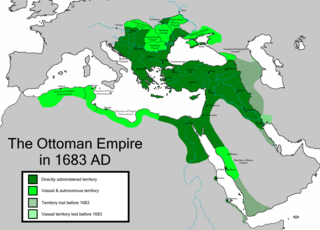Year 167 (CLXVII) was a common year starting on Wednesday of the Julian calendar. At the time, it was known as the Year of the Consulship of Aurelius and Quadratus. The denomination 167 for this year has been used since the early medieval period, when the Anno Domini calendar era became the prevalent method in Europe for naming years.

The Pax Romana is a roughly 200-year-long timespan of Roman history which is identified as a period and as a golden age of increased as well as sustained Roman imperialism, relative peace and order, prosperous stability, hegemonial power and regional expansion, despite a number of revolts and wars, and continuing competition with Parthia. It is traditionally dated as commencing from the accession of Caesar Augustus, founder of the Roman principate, in 27 BC and concluding in 180 AD with the death of Marcus Aurelius, the last of the "Five Good Emperors". Since it was inaugurated by Augustus with the end of the Final War of the Roman Republic, it is sometimes called the Pax Augusta. During this period of about two centuries, the Roman Empire achieved its greatest territorial extent and its population reached a maximum of up to 70 million people. According to Cassius Dio, the dictatorial reign of Commodus, later followed by the Year of the Five Emperors and the crisis of the third century, marked the descent "from a kingdom of gold to one of iron and rust".
Pax Americana is a term applied to the concept of relative peace in the Western Hemisphere and later in the world after the end of World War II in 1945, when the United States became the world's dominant economic and military power.

Pax Sinica is a historiographical term referring to periods of peace in East Asia, Northeast Asia, Southeast Asia, and Central Asia led by China. A study on the Sinocentric world system says the multiple periods of Pax Sinica, when taken together, amounted to a length of approximately two thousand years.

Pax, more commonly known in English as Peace, was the Roman goddess of peace derived and adopted from the ancient Greek equivalent Eirene. Pax was seen as the daughter of the Roman king god Jupiter and the goddess Justice. Worship of Peace was organized and made popular during the rule of the emperor Augustus who used her imagery to help stabilise the empire after the years of turmoil and civil war of the late republic. Augustus commissioned an altar of peace in her honour on the Campus Martius called Ara Pacis., and the emperor Vespasian built a temple for her on called the Templum Pacis. Pax had a festival held for her on January 3. In art she is commonly depicted holding out olive branches as a peace offering, as well as a caduceus, cornucopia, corn and a sceptre. Pax is also often associated with spring.
Perpetual Peace or Eternal Peace may refer to:
Pax Praetoriana refers to the relative stability of modern South Africa and the dominant foreign policy of the country towards the African continent and its encouragement of stable, accountable, democratic governments in other African states. The term Pax Nigeriana is sometimes used in relation to Nigeria's similar status. Both these terms derive from the expression Pax Romana – the Roman peace. The term Praetoriana also derives from Pretoria, the administrative capital city of South Africa.
"Pax Soprana" is the sixth episode of the HBO original series The Sopranos. It was written by Frank Renzulli, directed by Alan Taylor and originally aired on February 14, 1999.

In historiography, the Pax Ottomana or Pax Ottomanica is the economic and social stability attained in the conquered provinces of the Ottoman Empire, which, at the height of the Empire's power during the 16th and 17th centuries, applied to lands in the Balkans, Anatolia, the Middle East, North Africa and the Caucasus.

Pax Romana is a creator-owned four-issue limited series comic book written and illustrated by Jonathan Hickman and published by Image Comics on March 7, 2012.

Pax Romana is an international lay Catholic movement. It combines the representation of two movements with similar interests and goals, the International Catholic Movement for Intellectual and Cultural Affairs and the International Movement of Catholic Students. These two groups operate independently, but share the common name of Pax Romana in representation at the United Nations and UNESCO.
Roman peace can refer to:

The Sanctuary of the Three Gauls (Tres Galliae) was the focal structure within an administrative and religious complex established by Rome in the very late 1st century BC at Lugdunum. Its institution served to federalise and Romanise Gallia Comata as an Imperial province under Augustus, following the Gallic Wars of his predecessor Julius Caesar. The distinctively Gallo-Roman development of the Imperial sanctuary and its surrounding complex are well attested by literary, epigraphic, numismatic and archaeological evidence.
The Italian Catholic Federation of University Students is a federation of groups representing Roman Catholic university students in Italy.

Pax Romana is a Classical reenactment society based in the Netherlands, with the main goal to show Romans in the Netherlands as they would have lived in the last quarter of the first century AD.
In Greek mythology, Soteria was the goddess or spirit (daimon) of safety and salvation, deliverance, and preservation from harm. Soteria was also an epithet of the goddess Persephone, meaning deliverance and safety.
Pax Atomica is one of the terms that has sometimes been used to describe the period of severe tensions without a major military conflict between the United States of America and the Soviet Union during the Cold War. The term is also at times used to describe the entire post World War II/ post-atomic-bomb era. In the phrase's narrower application, applying only to the Cold War era, the phrase refers to the argument that the stability between the two superpowers was caused by each side's large nuclear arsenals which led to a state of Mutually Assured Destruction (MAD). That is, if one of the superpowers would have launched a nuclear attack, the other would have responded in the same way. This threatened the complete destruction of both countries and probably the entire northern hemisphere. John Lewis Gaddis has described the period as the Long Peace.
The Pax Mafiosa is a term describing a state of relative non-violence in the territories of organized crime groups caused by agreements not to interfere in criminal activities.







